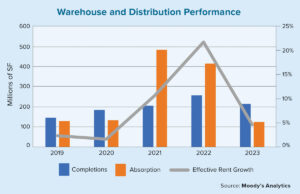About 43 percent of Americans live in rental properties, the highest percentage since 1965, according to a Pew Research Center analysis. Tighter home-purchase loan requirements, millennials with a desire for mobility and rising foreclosure rates in some areas of the country have contributed to growth in the single-family rental (SFR) realm.
The triple play of rising home values, increasing rent prices and flourishing interest from investors make SFRs a smart choice for a commercial mortgage broker’s business-expansion efforts. For your clients, there are other advantages to buy-and-hold residential investments, too, including long-term income opportunities and tax benefits.
Many millennials have put travel and life experiences ahead of the traditional American dream of owning their own home, while other people of all ages have been priced out of their local real estate markets. The solution for many — if they recognize they don’t have adequate savings for a downpayment or a strong enough credit rating to obtain a home mortgage — is that they are able and willing to afford the higher monthly payments associated with being an SFR tenant.
Even as home sales lag due to rising costs and a lack of inventory, people still want the amenities, privacy, flexibility and extra space of a single-family home. SFRs deliver these benefits without the financial challenges of homeownership.
Indeed, more and more commercial real estate investors are branching out into the SFR space, which is similar in many ways to commercial leasing and multifamily investments. Mortgage brokers should help borrowers answer a few questions as they develop investment strategies. Should investors try to compete for the scant existing properties available, or pursue long-term investments in new SFR construction? And what are the options available to finance new-home construction in master-planned communities, a growing trend in the rental real estate market?
New-construction benefits
Large investment companies have typically dominated the multifamily rental market. SFRs, however, represent greater opportunities for individual real estate investors and smaller companies.
By investing in new construction, investors don’t have to factor in the rehabilitation costs associated with the purchase of a distressed property, or take on issues they may not have spotted during an initial inspection. Dramatically reducing repair and maintenance costs can result in greater profits for investors, and new-home warranties provide protection against anything that may go wrong. Commercial real estate investors entering this market don’t need to find local residential contractors or manage a renovation project, creating a shorter learning curve than with fix-and-flip investment properties.
Investors can purchase multiple newly built homes in the same community or adjacent neighborhoods, making management efforts easier. It’s not uncommon for investors to buy 10 to 50 properties within a community and hire a property manager to oversee them all. This is especially desirable for landlords who own properties in areas far from their primary residence.
Single-asset and portfolio property owners should know their exit strategies. Investors who plan to hold a property for a longer period of time should seek out a loan with a lower interest rate and a yield-maintenance program. If a borrower desires greater flexibility than paying for a step-down prepayment plan, however, brokers should ask lenders about the alternatives.
Partner with builders
Investors can choose to buy single-family rental homes when a neighborhood is still under construction, partnering with a builder to get their choice of properties, or they may be able to entice builders to sell newly constructed properties.
Realizing the profit potential, some builders are holding onto single-family properties, hiring a management company and diversifying their business with rental cash flows. A Phoenix-area developer, for example, has chosen this tactic and the company’s principal notes that he likes the multiple exit options available, including the ability to sell to an investor.
Investors who buy into speculative ventures can have incredible potential for profits. They may have the chance to market their properties before they’re even built, creating interest and demand within the region. In areas with great demand, investors could fill their SFR units with highly qualified tenants before the paint is dry.
Additionally, there are often opportunities to customize homes if investors jump in during the preconstruction phase. For build-to-rent homes, this might include selecting carpet instead of hardwood flooring, or granite rather than marble countertops, to keep construction costs down or increase the home’s durability.
Of course, new-construction endeavors are not for the faint of heart or for inexperienced investors. Buyers are at the whim of builders and contractors, so any construction delays can mean revenue losses if the landlord can’t rent the property according to their expected schedule. Obtaining financing for speculative construction is often more difficult, too, which could make newly built SFRs the wiser choice.
Competitive markets
For real estate investors as well as mortgage brokers, SFRs represent a lucrative market, but with home inventories down, properties may be hard to find. In 2017, the average single-family home was on the market for only three weeks before it sold, according to the National Association of Realtors.
In this highly competitive market, one in four U.S. homes sold for more than the asking price in 2017. In cities like Seattle, Salt Lake City, San Francisco, and San Jose, California, more than half of homes placed on the market sold for more than the asking price, according to real estate services company Zillow.
The good news for landlords is that rent prices also are up across the country because of high demand. In Phoenix, for example, rent prices for SFR properties rose 5.4 percent year over year as of this past March, according to analytics company CoreLogic, with few signs of the upward pressure on prices letting up. And in Charlotte, North Carolina, rents increased by 36 percent between 2013 and 2018 — due, in part, to a new all-rental subdivision of four-bedroom homes.
The Charlotte subdivision is just one example of a purpose-built SFR community. One in 20 single-family homes were built to rent in 2018, and they are often clustered in master-planned neighborhoods. Builders can purchase lots inexpensively, acquire building materials on a large scale and line up affordable labor to create three- to four-bedroom single-family homes that meet market demand in prime areas.
Builders are even teaming up with relocation companies to place families in desirable neighborhoods where they may decide to buy when the time is right. These homes fulfill the desires of today’s families to live in a tight-knit community close to schools and shopping while having their own property, a yard for their children to play in and plenty of space inside the home. In the Phoenix metro area, for example, build-to-rent developers have erected several communities close to some of the best schools in the Phoenix area, and these single-family homes are renting for hundreds of dollars more than what monthly mortgage payments might cost.
• • •
For investors and mortgage brokers interested in the SFR market, successfully communicating with a lender hinges on truly knowing your property portfolio. This means having a clean line of sight on the true net operating income, operating model and exit strategy. With this knowledge set, you will be able to negotiate the best leverage, interest rate, loan duration and other terms.
Author
-
Michael Miller is the chief marketing officer (CMO) of 5 Arch Funding Corp. and of its parent company, 5 Arches LLC. Previously, he was CMO of Epsilon Agency Services and managing director of Catapult Marketing. He also co-founded Hyper Marketing, which was later acquired by Epsilon. Miller has developed global-marketing platforms for brands like JPMorgan Chase, Union Bank, Wells Fargo, Google, Intel, General Motors Co., Home Depot, Lennar and Tishman Speyer.




